Visual Feedback Control of a Rat Ankle Angle Using a Wirelessly Powered Two-Channel Neurostimulator
Abstract
1. Introduction
2. Wirelessly Powered Neurostimulator
2.1. Receiver System for Selective Stimulation of Two Peripheral Nerves
2.2. The Transmitter System for Visual Feedback Control
2.3. The Cuff Electrode for the Nerve-Neurostimulator Interface
3. Evaluation of the Fabricated Neurostimulator
3.1. Relationship Between the Stimulation Current and the Gap between the Transmitter/Receiver Coils
3.2. The Ability of Switching to Stimulate Two Different Nerves
3.3. The Selective Stimulation of the Peroneal and Tibial Nerves
4. Visual Feedback Control of the Rat Ankle Joint
4.1. The Experimental Setup for Visual Feedback Control of the Rat Ankle Joint
4.2. Step Response of the Rat Ankle Joint
4.3. Visual Feedback Control of the Rat Ankle Joint
5. Discussion
6. Conclusions
Supplementary Materials
Author Contributions
Funding
Ethical considerations of the animal experiment
Conflicts of Interest
References
- Ajiboye, A.B.; Willett, F.R.; Young, D.R.; Memberg, W.D.; Murphy, B.A.; Miller, J.P.; Walter, B.L.; Sweet, J.A.; Hoyen, H.A.; Keith, M.W.; et al. Restoration of reaching and grasping movements through brain-controlled muscle stimulation in a person with tetraplegia: A proof-of-concept demonstration. Lancet 2017, 389, 1821–1830. [Google Scholar] [CrossRef]
- Bouton, C.E.; Shaikhouni, A.; Annetta, N.V.; Bockbrader, M.A.; Friedenberg, D.A.; Nielson, D.M.; Sharma, G.; Sederberg, P.B.; Glenn, B.C.; Mysiw, W.J.; et al. Restoring cortical control of functional movement in a human with quadriplegia. Nature 2016, 533, 247–250. [Google Scholar] [CrossRef] [PubMed]
- Kurimoto, S.; Kato, S.; Nakano, T.; Yamamoto, M.; Takanobu, N.; Hirata, H. Transplantation of embryonic motor neurons into peripheral nerve combined with functional electrical stimulation restores functional muscle activity in the rat sciatic nerve transection model. J. Tissue Eng. Regen. Med. 2016, 10, 477–484. [Google Scholar] [CrossRef] [PubMed]
- Kato, S.; Kurimoto, S.; Nakano, T.; Yoneda, H.; Ishii, H.; Mita-Sugiura, S.; Hirata, H. Successful Transplantation of Motoneurons into the Peripheral Nerve depends on the Number of Transplanted Cells. Nagoya J. Med. Sci. 2015, 77, 253–263. [Google Scholar] [PubMed]
- Ragnarsson, K.T. Functional electrical stimulation after spinal cord injury: Current use, therapeutic effects and future directions. Spinal Cord 2007, 46, 255–274. [Google Scholar] [CrossRef]
- Deshmukh, A.; Brown, L.; Barbe, M.F.; Braverman, A.S.; Tiwari, E.; Hobson, L.; Shunmugam, S.; Armitage, O.; Hewage, E.; Ruggieri, M.R.; et al. Fully implantable neural recording and stimulation interfaces: Peripheralnerve interface applications. J. Neurosci. Methods 2020, 333, 108562. [Google Scholar] [CrossRef]
- Thakor, N.V.; Wang, Q.; Greenwald, E. Bidirectional Peripheral Nerve Interface and Applications. In Proceedings of the Engineering in Medicine and Biology Society, IEEE, Orlando, FL, USA, 16–20 August 2016; pp. 6327–6330. [Google Scholar]
- Hügl, S.; Rülander, K.; Lenarz, T.; Majdani, O.; Rau, T.S. Investigation of ultra-low insertion speeds in an inelastic artificial cochlear model using custom-made cochlear implant electrodes. Eur. Arch. Oto. Rhino. Laryngol. 2018, 275, 2947–2956. [Google Scholar] [CrossRef]
- Kim, Y.; Kim, J.S.; Kim, G.W. A Novel Frequency Selectivity Approach Based on Travelling Wave Propagation in Mechanoluminescence Basilar Membrane for Artificial Cochlea. Sci. Rep. 2018, 8, 12023. [Google Scholar] [CrossRef] [PubMed]
- Parastarfeizabadi, M.; Kouzani, A.Z. Advances in closed-loop deep brain stimulation devices. J. Neuro Eng. Rehabil. 2017, 14, 79. [Google Scholar] [CrossRef]
- Broccard, F.D.; Mullen, T.; Chi, Y.M.; Peterson, D.; Iversen, J.R.; Arnold, M.; Kreutz-Delgado, K.; Jung, T.P.; Makeig, S.; Poizner, H.; et al. Closed-loop Brain-Machine-Body Interfaces for Noninvasive Rehabilitation of Movement Disorders. Annal. Biomed. Eng. 2014, 42, 1573–1593. [Google Scholar] [CrossRef]
- Little, S.; Brown, P. What brain signals are suitable for feedback control of deep brain stimulation in Parkinson’s disease? Annal. N. Y. Acad. Sci. 2012, 1265, 9–24. [Google Scholar] [CrossRef] [PubMed]
- Kaniusas, E.; Kampusch, S.; Tittgemeyer, M.; Panetsos, F.; Gines, R.F.; Papa, M.; Kiss, A.; Podesser, B.; Cassara, A.M.; Tanghe, E.; et al. Current Directions in the Auricular Vagus Nerve Stimulation II—An Engineering Perspective. Front. Neurosci. 2019, 13, 772. [Google Scholar] [CrossRef]
- Romero-Ugalde, H.M.; Rolle, V.L.; Bonnet, J.L.; Henry, C.; Mabo, P.; Carrault, G.; Hernández, A.I. Closed-loop vagus nerve stimulation based on state transition models. IEEE Trans. Biomed. Eng. 2018, 65, 1630–1638. [Google Scholar] [CrossRef] [PubMed]
- Miyamoto, T.; Takeuchi, M.; Aoyama, T.; Nakano, T.; Kurimoto, S.; Hirata, H.; Hasegawa, Y. Peripheral nerve stimulation device enabling adjustment of stimulation voltage. In Proceedings of the International Symposium on Micro-NanoMechatronics and Human Science, Nagoya, Japan, 9–12 December 2018; pp. 328–330. [Google Scholar]
- Kiani, M.; Jow, U.M.; Ghovanloo, M. Design and Optimization of a 3-Coil Inductive Link for Efficient Wireless Power Transmission. IEEE Trans. Biomed. Circuits Syst. 2011, 5, 579–591. [Google Scholar] [CrossRef] [PubMed]
- Cho, S.H.; Xue, N.; Cauller, L.; Rosellini, W.; Lee, J.B. A SU-8-Based Fully Integrated Biocompatible Inductively Powered Wireless Neurostimulator. J. Microelectromech. Syst. 2013, 22, 170–176. [Google Scholar] [CrossRef]
- Navarro, X.; Krueger, T.B.; Lago, N.; Micera, S.; Stieglitz, T.; Dario, P. Critical review of interfaces with the peripheral nervous system for the control of neuroprostheses and hybrid bionic systems. J. Peripher. Nerv. Syst. 2005, 10, 229–258. [Google Scholar] [CrossRef]
- Shintake, J.; Sonar, H.; Piskarev, E.; Paik, J.; Floreano, D. Soft pneumatic gelatin actuator for edible roborics. In Proceedings of the IEEE/RSJ International Conference on Intelligent Robots and Systems, Vancouver, BC, Canada, 24–28 September 2017. [Google Scholar] [CrossRef]
- Cholleti, E.R.; Stringer, J.; Assadian, M.; Battmann, V.; Bowen, C.; Aw, K. Highly Stretchable Capacitive Sensor with Printed Carbon Black Electrodes on Barium Titanate Elastomer Composite. Sensors 2019, 19, 42. [Google Scholar] [CrossRef]
- Thakur, R.; Nair, A.R.; Jin, A.; Fridman, G.Y. Fabrication of a Self-Curling Cuff with a Soft, Ionically Conducting Neural Interface. In Proceedings of the IEEE Engineering in Medicine and Biology Society, Berlin, Germany, 23–27 July 2019; pp. 3750–3753. [Google Scholar]
- Peckham, P.H.; Kuntson, J.S. Functional electrical stimulation for neuromuscular applications. Ann. Rev. Biomed. Eng. 2005, 7, 327–360. [Google Scholar] [CrossRef]
- Sharma, N.; Stegath, K.; Gregory, C.M.; Dixon, W.E. Nonlinear neuromuscular electrical stimulation tracking control of a human limb. IEEE Trans. Neural Syst. Rehabil. Eng. 2009, 17, 576–584. [Google Scholar] [CrossRef]
- Ilfeld, B.M.; Gabriel, R.A.; Saulino, M.F.; Chae, J.; Peckham, P.H.; Grant, S.A.; Gilmore, C.A.; Donohue, M.C.; deBock, M.G.; Wongsarnpigoon, A.; et al. Infection Rates of Electrical Leads Used for Percutaneous Neurostimulation of the Peripheral Nervous System. Pain Pract. 2017, 17, 753–762. [Google Scholar] [CrossRef]
- Shon, A.; Chu, J.U.; Jung, J.; Kim, H.; Youn, I. An implantable wireless neural interface system for simultaneous recording and stimulation of peripheral nerve with a single cuff electrode. Sensors 2018, 18, 1. [Google Scholar] [CrossRef] [PubMed]
- Jarc, A.M.; Berniker, M.; Tresch, M.C. FES control of isometric Forces in the rat hindlimb using many muscles. IEEE Trans. Biomed. Eng. 2013, 60, 1422–1430. [Google Scholar] [CrossRef]
- Schearer, E.M.; Liao, Y.W.; Perreault, E.J.; Tresch, M.C.; Memberg, W.D.; Kirsch, R.F.; Lynch, K.M. Semiparametric identification of human arm dynamics for flexible control of a functional electrical stimulation neuroprosthesis. IEEE Trans. Neural Syst. Rehabil. Eng. 2016, 12, 1405–1415. [Google Scholar] [CrossRef]
- Inmann, A.; Haugland, M. Functional evaluation of natural sensory feedback incorporated in a hand grasp neuroprosthesis. Med. Eng. Phys. 2004, 26, 439–447. [Google Scholar] [CrossRef] [PubMed]
- Srinivasan, S.S.; Mainmon, B.E.; Diaz, M.; Song, H.; Herr, H.M. Closed-loop functional optogenetic stimulation. Nature Commun. 2018, 9, 5303. [Google Scholar] [CrossRef] [PubMed]
- Wolf, D.N.; Schearer, E.M. Simple quasi-static control of functional electrical stimulation-driven reaching motions. In Proceedings of the 9th International Conference on Neural Engineering, San Francisco, CA, USA, 20–23 March 2019; pp. 211–214. [Google Scholar]
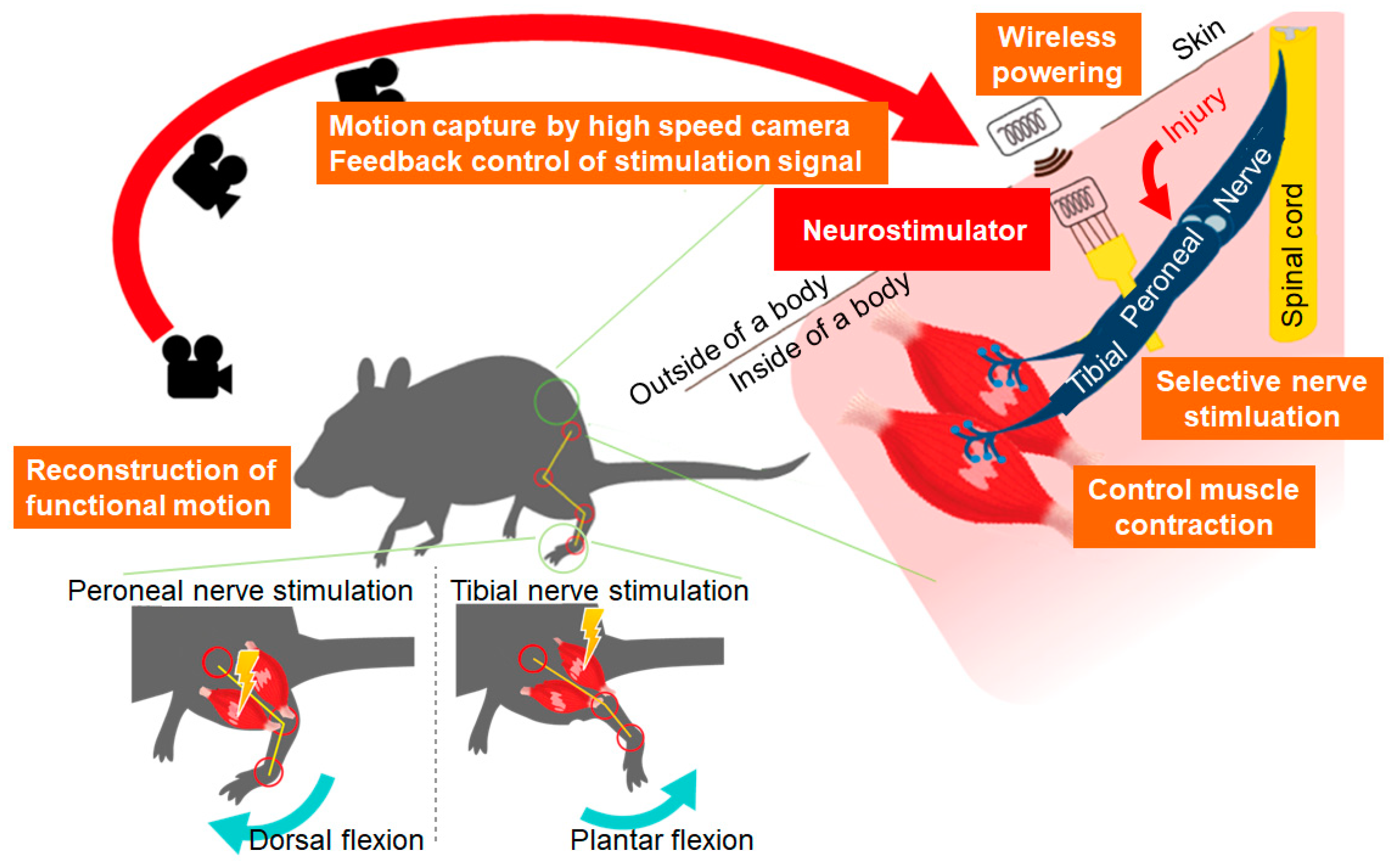
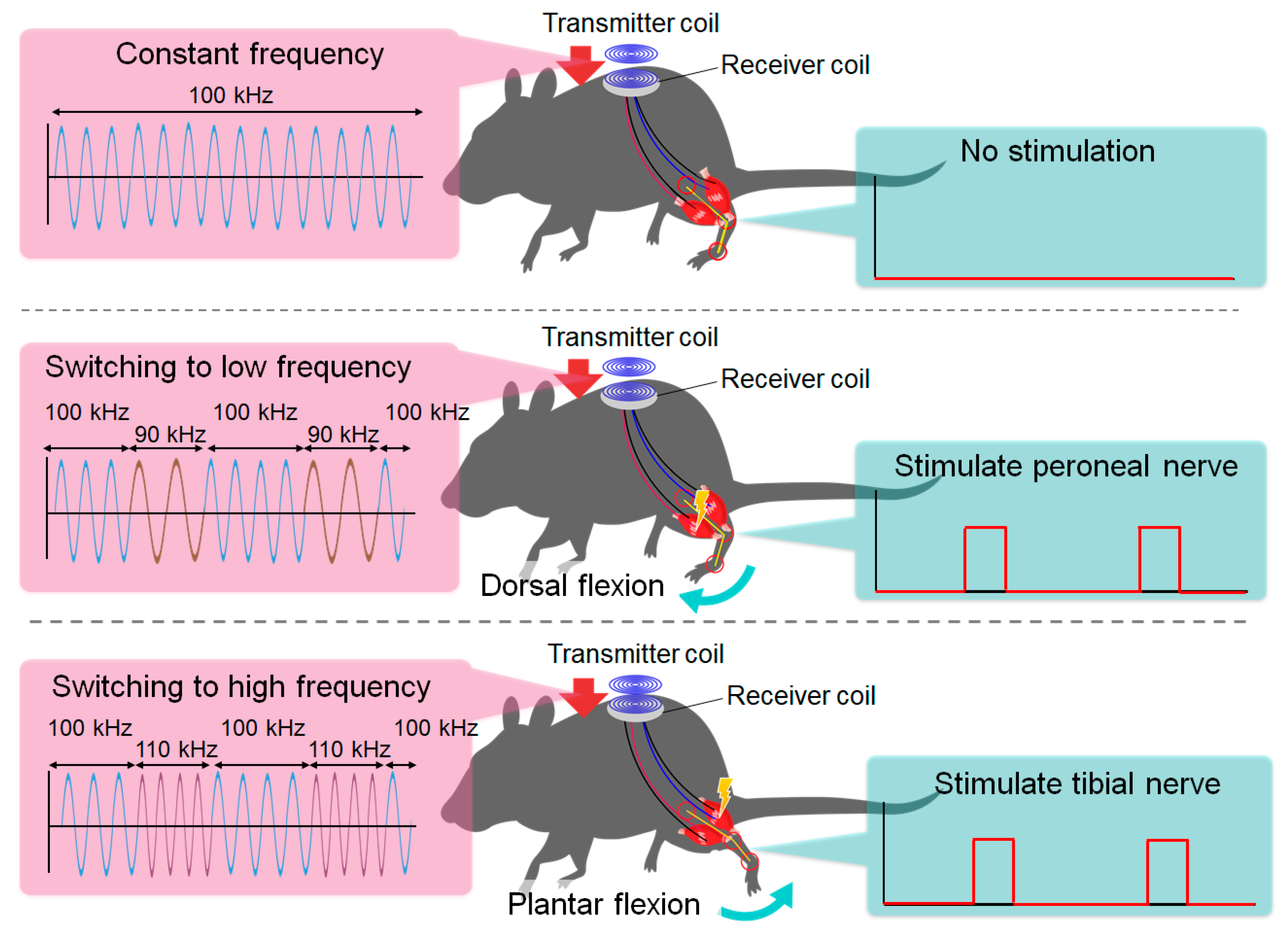
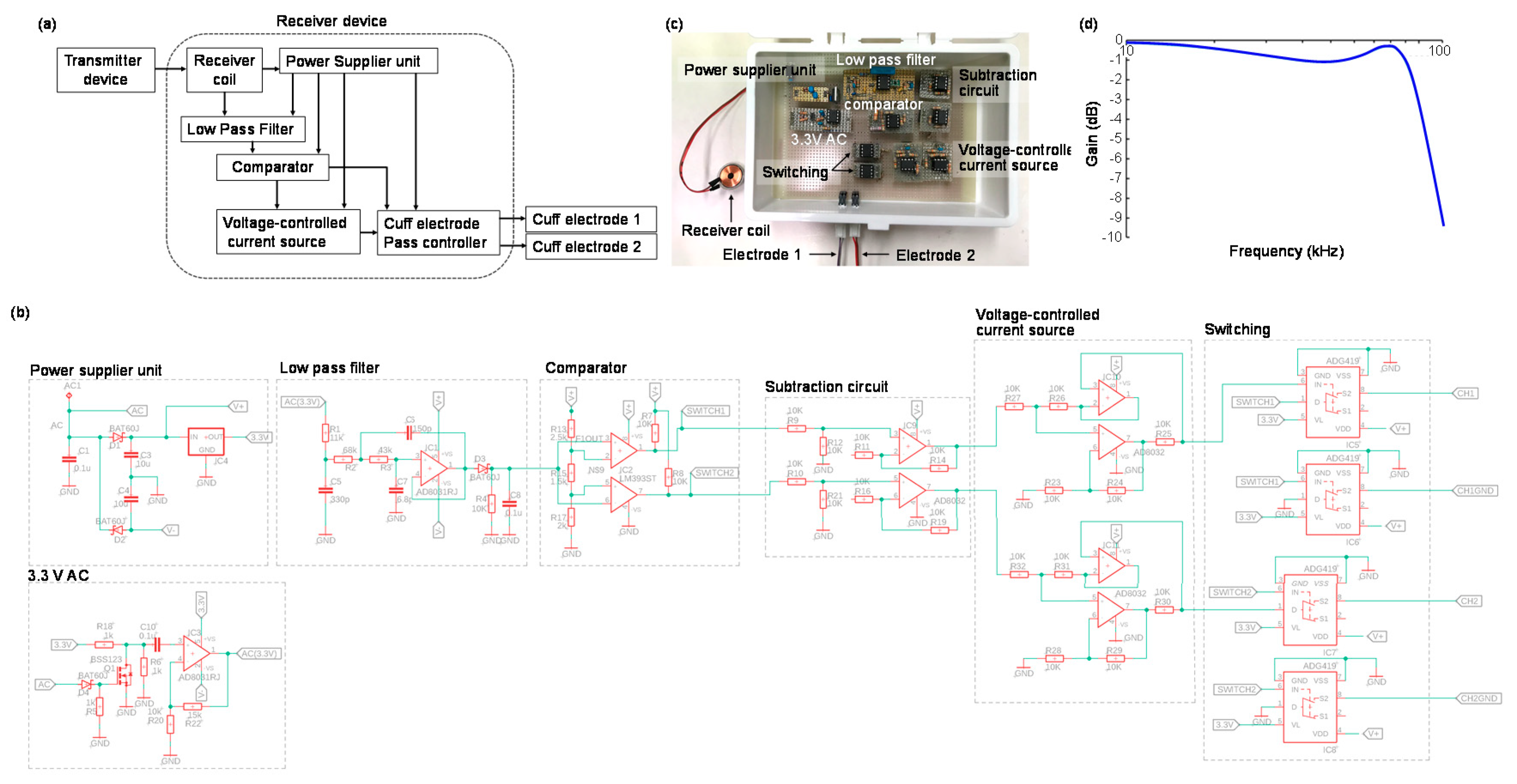

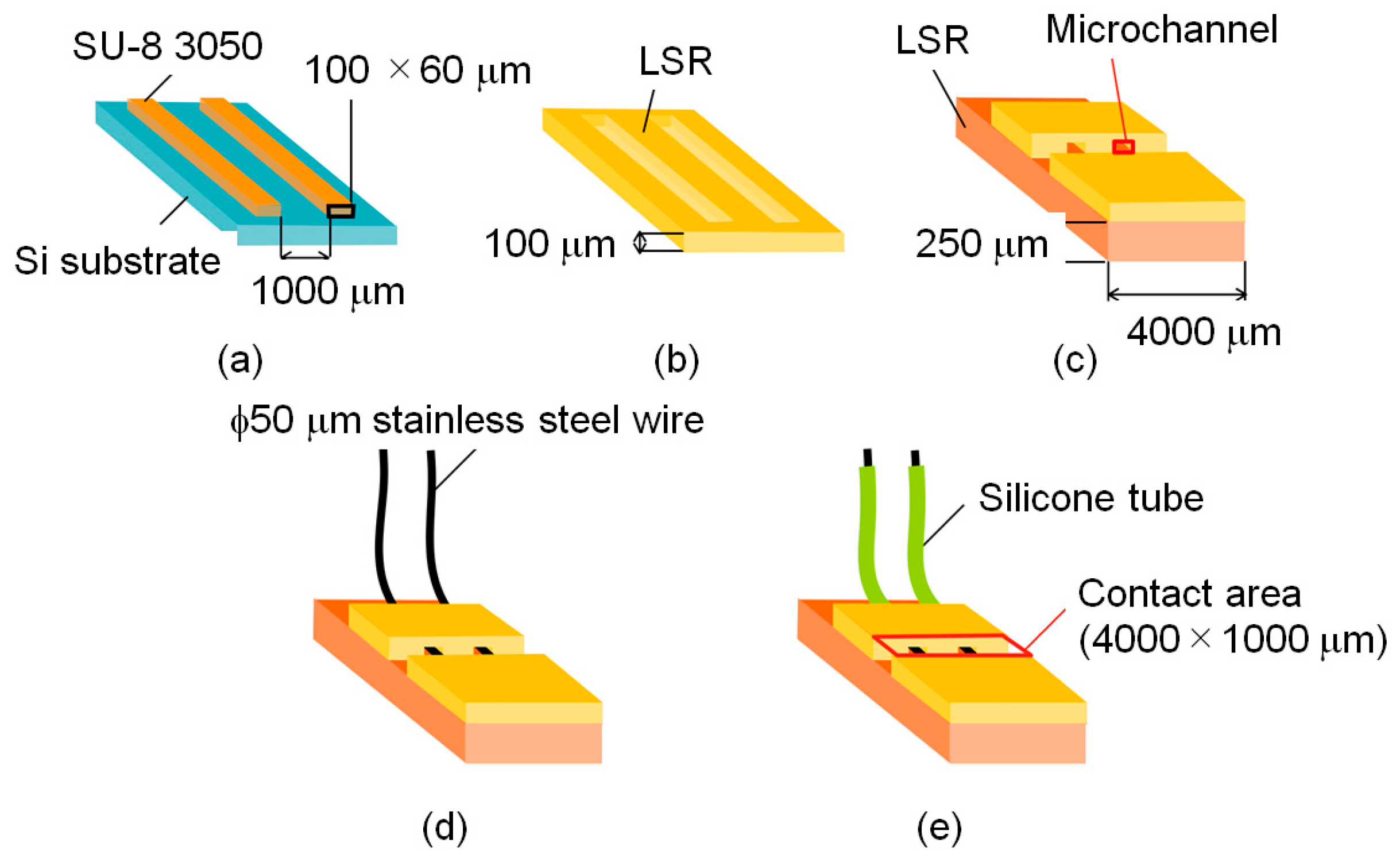




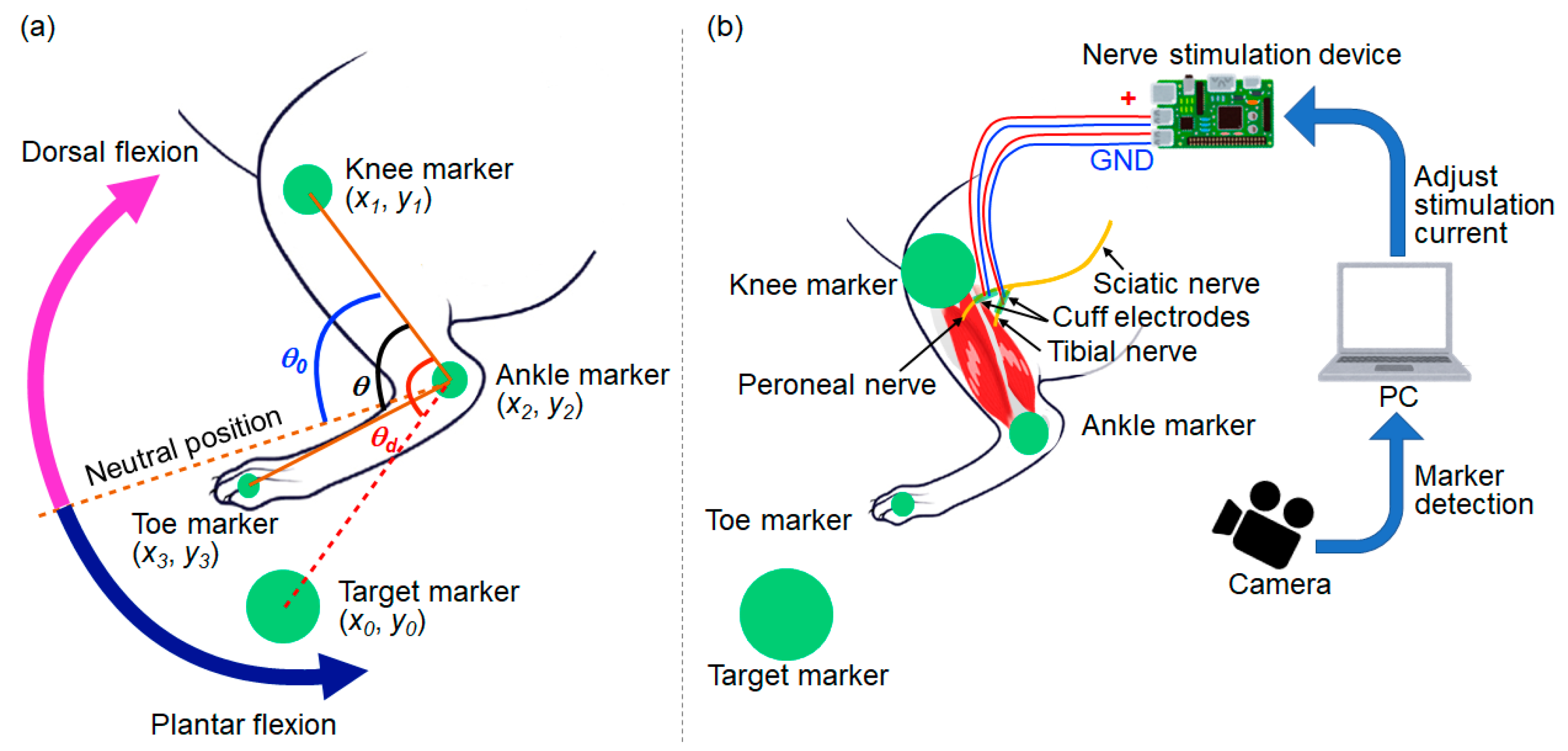
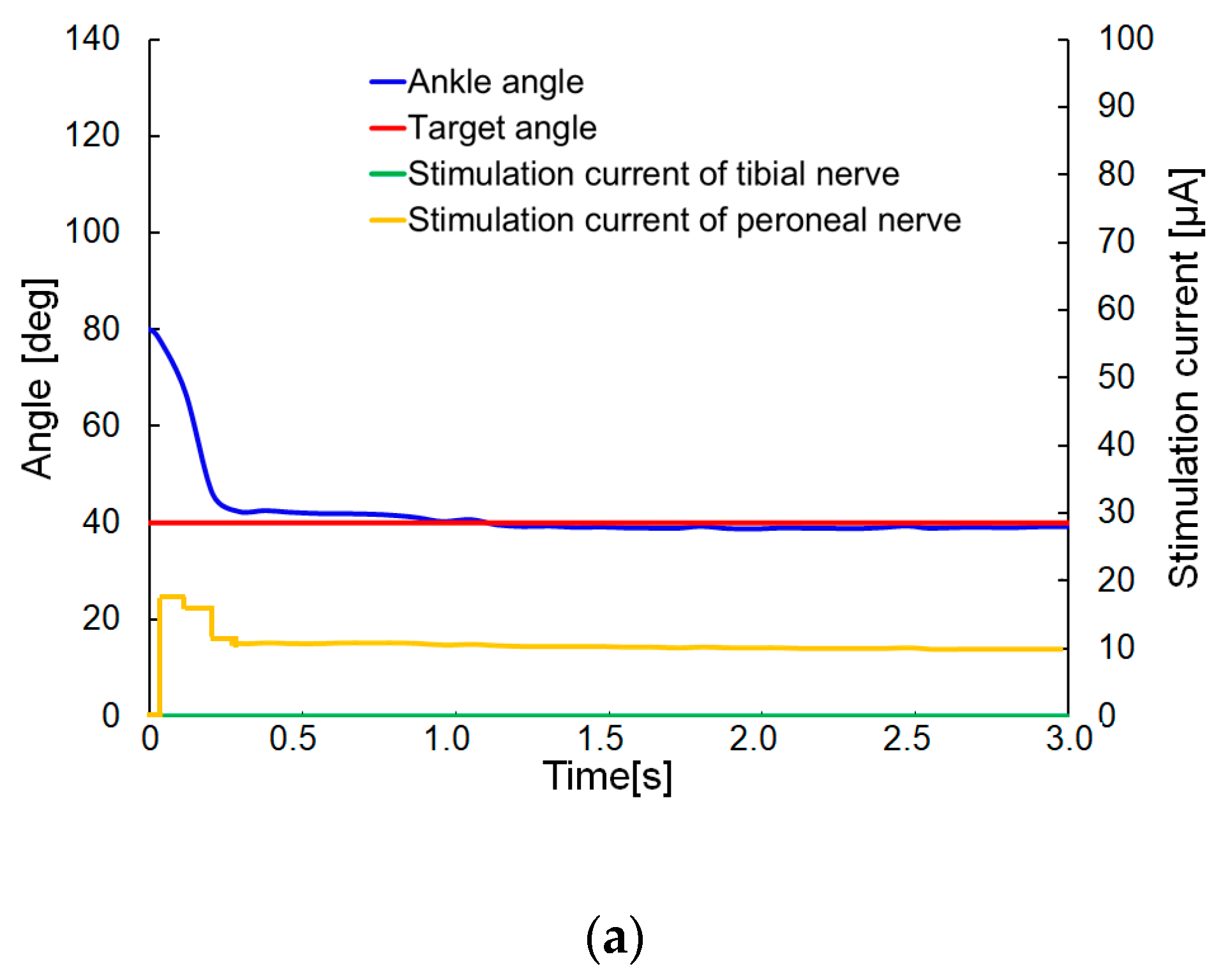
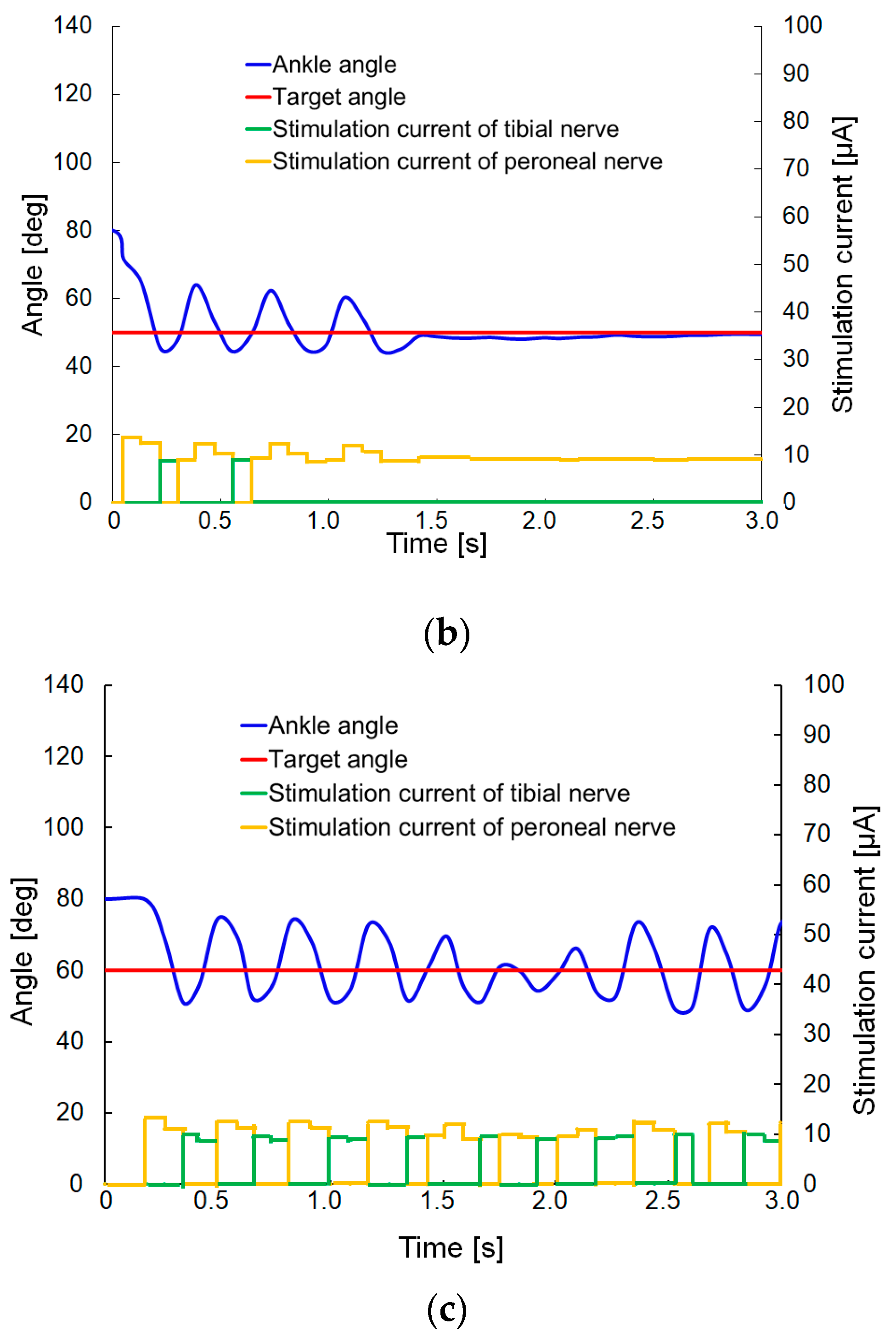
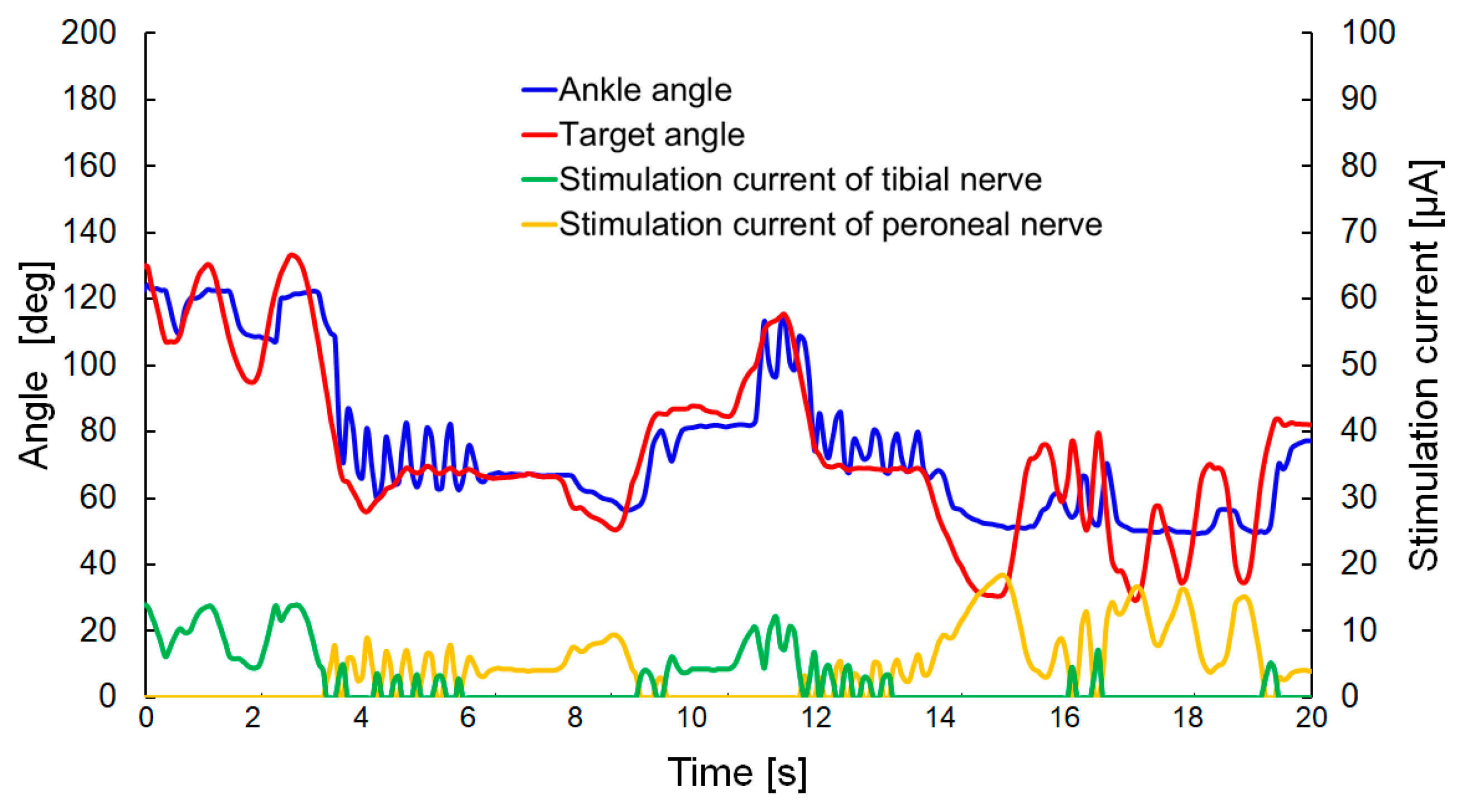
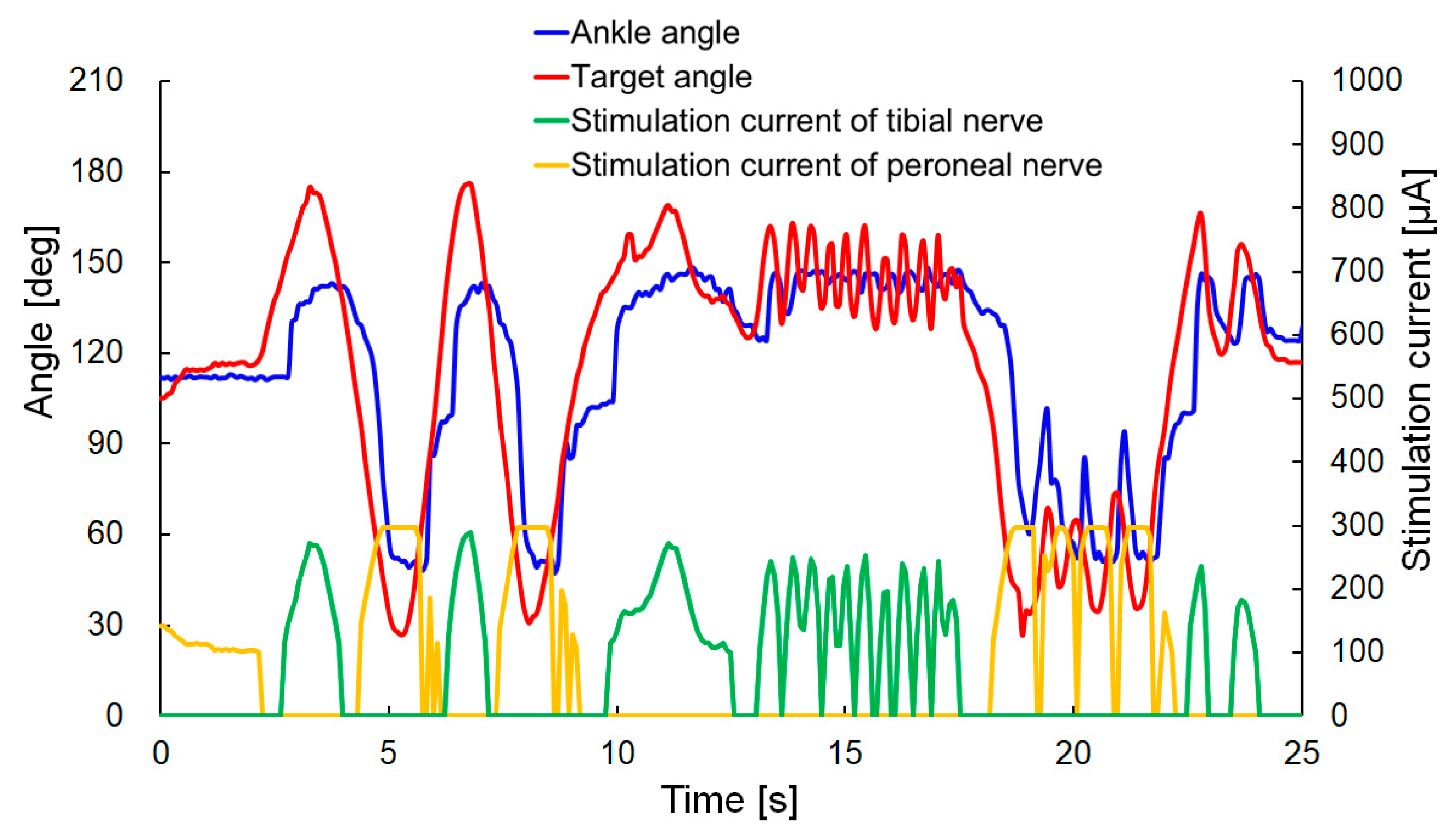
© 2020 by the authors. Licensee MDPI, Basel, Switzerland. This article is an open access article distributed under the terms and conditions of the Creative Commons Attribution (CC BY) license (http://creativecommons.org/licenses/by/4.0/).
Share and Cite
Takeuchi, M.; Watanabe, K.; Ishihara, K.; Miyamoto, T.; Tokutake, K.; Saeki, S.; Aoyama, T.; Hasegawa, Y.; Kurimoto, S.; Hirata, H. Visual Feedback Control of a Rat Ankle Angle Using a Wirelessly Powered Two-Channel Neurostimulator. Sensors 2020, 20, 2210. https://doi.org/10.3390/s20082210
Takeuchi M, Watanabe K, Ishihara K, Miyamoto T, Tokutake K, Saeki S, Aoyama T, Hasegawa Y, Kurimoto S, Hirata H. Visual Feedback Control of a Rat Ankle Angle Using a Wirelessly Powered Two-Channel Neurostimulator. Sensors. 2020; 20(8):2210. https://doi.org/10.3390/s20082210
Chicago/Turabian StyleTakeuchi, Masaru, Keita Watanabe, Kanta Ishihara, Taichi Miyamoto, Katsuhiro Tokutake, Sota Saeki, Tadayoshi Aoyama, Yasuhisa Hasegawa, Shigeru Kurimoto, and Hitoshi Hirata. 2020. "Visual Feedback Control of a Rat Ankle Angle Using a Wirelessly Powered Two-Channel Neurostimulator" Sensors 20, no. 8: 2210. https://doi.org/10.3390/s20082210
APA StyleTakeuchi, M., Watanabe, K., Ishihara, K., Miyamoto, T., Tokutake, K., Saeki, S., Aoyama, T., Hasegawa, Y., Kurimoto, S., & Hirata, H. (2020). Visual Feedback Control of a Rat Ankle Angle Using a Wirelessly Powered Two-Channel Neurostimulator. Sensors, 20(8), 2210. https://doi.org/10.3390/s20082210






